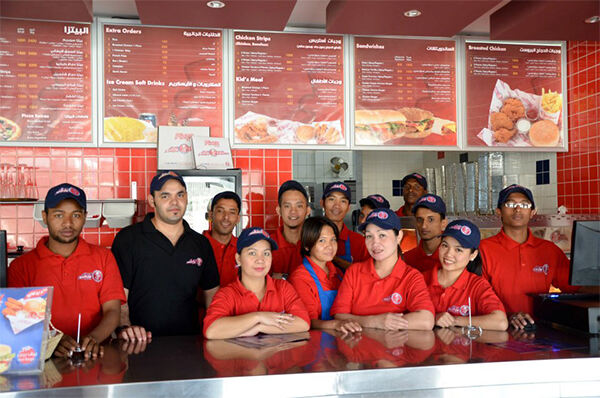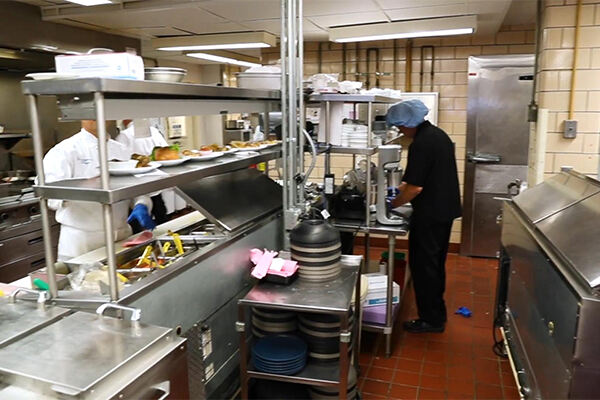News
Understanding Quick Service Restaurants (QSRs): Definition, Examples, & Key Characteristics
In the world of the fast food service industry, quick service restaurants are taking the fast-casual options by storm through their quick food service, limited menus, and affordable prices for the meals they prepare. Over the past decade, the number of quick service restaurants has been steadily increasing around the world. There is no doubt that QSR has become the dominant trend in fast food restaurant operations.
But under the same concept of serving fast food, how do we define what QSR truly means? What are the common examples of quick service food? What are its key features? And how can we choose the best commercial kitchen layout for its back-of-house operations? This guide will help you figure that out.
What Exactly Is a Quick Service Restaurant (QSR)? Definition & Meaning
A quick service restaurant (QSR) is a specific type of fast food restaurant that serves popular items like burgers, fried fish, sandwiches, and similar crowd-pleasers. As the name suggests, quick service is the main feature of QSRs — they’re built around convenience and speed, catering especially to customers who don’t have time to wait around for their food.
This business model, along with its target clientele, naturally leads to a limited menu focused on affordable and widely appealing combo meals. As a result, the back-of-house kitchen doesn’t require complex or high-end commercial cooking equipment.
Guests who choose QSRs are typically looking for a quick bite to grab and go, rather than a sit-down experience. That’s why there's no need to allocate a large portion of the budget to the dining room. When it comes to kitchen design, the layout is often similar to that of a ghost kitchen — compact, multi-functional, and optimized for efficiency.

The Landscape of Quick Service Food: Examples You Should Know
There are some common brands of quick service food chains around the world:
- Subway: Famous for its sandwiches, salads and fast food service.
- McDonald's: One of the biggest fast food chains, known for its burgers and speedy service.
- Domino's Pizza: A pizza chain recognized for popularizing home delivery in the fast food industry.
- In-N-Out Burger: Considered one of the top fast food restaurants, known for its quality and quick service.
- Burger King: Known for its burger combo meals, and similar in concept to McDonald’s.
- Five Guys: Focuses on hamburgers served with Kraft American cheese or applewood-smoked bacon.
What Are the Key Characteristics of a QSR?
You might be wondering — isn’t a QSR just another name for a fast food restaurant? What’s the actual difference between the two? Compared with conventional fast food restaurants, QSRs focus more on providing fast, convenient, and affordable food options through a limited menu. Guests usually prefer ordering at the drive-through or counter, which means they can simply grab their meals and go without delay.
If you're still unsure about the exact definition of QSR, here are the key characteristics of QSR to help you figure it out.
- Speedy Food Service
Speed and efficiency are key characteristics of QSRs that attract consumers — and often the main reason they choose this dining option. When ordering at the counter, customers are served almost immediately. Many QSRs also offer drive-thru service to further reduce wait times and enhance convenience.
- Limited Menu Selection
Compared with fast casual dining, menu simplicity is a key competitive edge for QSRs. When people walk into a QSR, they don’t want to spend time debating what to order — they already know what to expect. For example, when you go to Subway, sandwiches and salads are your go-to. When you visit KFC, it’s all about fried chicken and classic side dishes. The limited menu speeds up decision-making and shortens the entire dining experience.
- Standardized Food Preparation
For QSRs, the ingredients, recipes, and even the cooking methods are standardized. The kitchen behind it is often separated into different zones, and the staff only need to focus on their own part. The whole production line works like an assembly line — from food prep, cooking, and sauce to wrapping — the food is quickly prepared or pre-made, ensuring both efficiency and consistent food quality.
- Affordable Prices
Not full service, limited menu options — how to offer inexpensive meals to customers as quickly as possible is the core mission of QSRs. That’s a challenge for many quick service restaurants: to provide affordable meals with consistent quality, while still making a buck.

What Is the Best Kitchen Layout for QSRs?
For quick service restaurants, the best kitchen layout is the assembly line layout — built for speed, repetition, and efficiency. This is the ideal layout for the fast food service model. In QSRs, you just need to focus on the specialty dishes, which means staff are required to repeat the same meal continuously.
This layout allows each staff member to focus on a single task, keeping food moving smoothly from prep to cook to pack. A mature commercial kitchen layout for QSRs should prioritize a clear flow of ingredients and minimize backtracking. Cold storage, prep tables, fryers, and hot holding stations must be placed strategically to support a streamlined service without hesitation.
To meet the speedy demands of QSRs, the kitchen should be equipped with essential restaurant supplies and commercial cooking equipment such as salamanders, griddles, fryers, hot lamps, combi ovens, and refrigeration units — all within easy reach. Compactness and order are key to maintaining speed and consistency during peak hours.

 After-Sales:
After-Sales:
 EN
EN
 AR
AR
 HR
HR
 NL
NL
 FI
FI
 FR
FR
 DE
DE
 EL
EL
 HI
HI
 IT
IT
 PT
PT
 RO
RO
 RU
RU
 ES
ES
 TL
TL
 ID
ID
 SL
SL
 VI
VI
 ET
ET
 MT
MT
 TH
TH
 FA
FA
 AF
AF
 MS
MS
 IS
IS
 MK
MK
 HY
HY
 AZ
AZ
 KA
KA
 UR
UR
 BN
BN
 BS
BS
 KM
KM
 LO
LO
 LA
LA
 MN
MN
 NE
NE
 MY
MY
 UZ
UZ
 KU
KU









